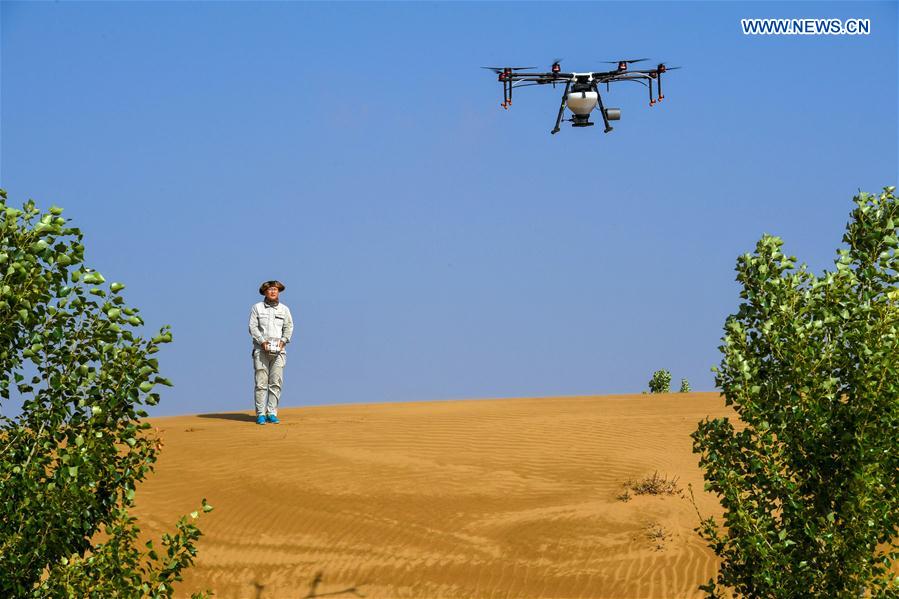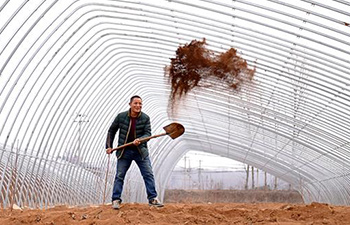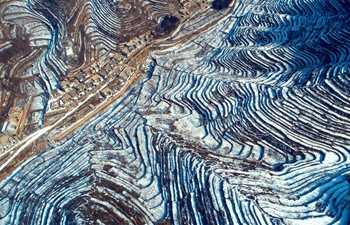 ?
?A technician controls a drone to sow seeds at the Kubuqi Desert, north China's Inner Mongolia Autonomous Region, July 11, 2018. Kubuqi, the seventh largest desert in China, is a good example of China's success in alleviating desertification. About 6,460 square kilometers of the Kubuqi desert has been reclaimed in the last 30 years. China has seen reduced desertification and increased forest coverage since 1978, thanks to the Three-North Afforestation Program (TNAP), said a report released on Dec. 24, 2018. Constructed in the northeast, north and northwest China, TNAP is a national program fighting against soil erosion and wind-sand damage by planting sand-fixing forests. The area of sand-fixing forests has increased by 154 percent in the past 40 years, contributing to the reduction of desertification by around 15 percent, according to a report jointly released by the National Forestry and Grassland Administration (NFGA) and the Chinese Academy of Sciences. Over the past 40 years, TNAP increased the forest area by 30.14 million hectares and raised the forest coverage rate from 5.05 percent to 13.57 percent in the regions it covers, said Liu Dongsheng, deputy head of the NFGA. (Xinhua/Peng Yuan)















